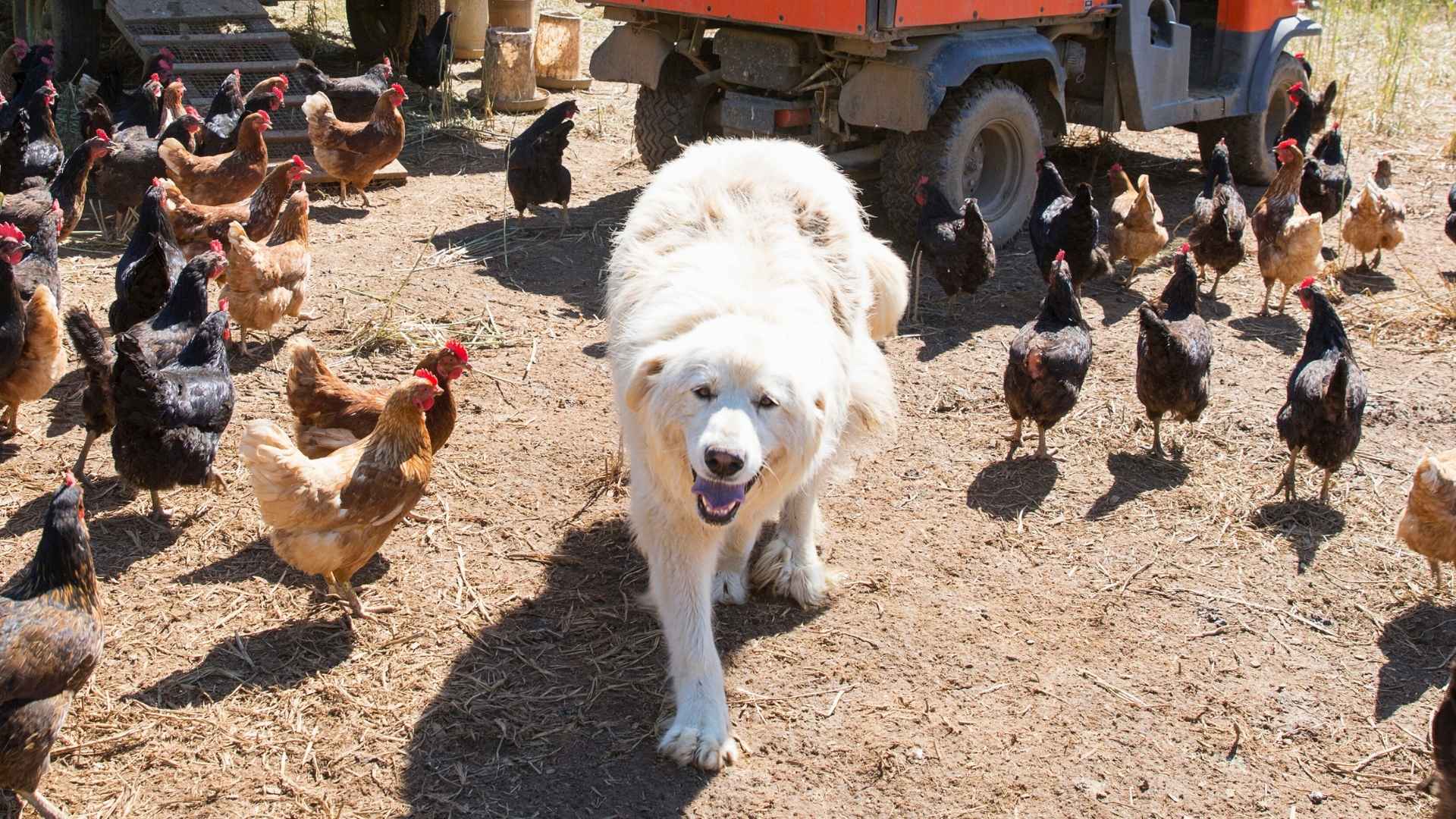Integrating dogs into a farm setting requires careful selection, especially when chickens are part of the ensemble. Some breeds possess natural instincts that make them ideal companions and protectors for poultry.
Whether you’re running a hobby backyard coop or managing a full-fledged homestead, the right dog can become a loyal guardian of your flock, offering both protection and peace of mind. Choosing a breed with a low prey drive, calm demeanor, and proper training potential is key to maintaining harmony between fur and feathers.
Interestingly, the bond between dogs and chickens isn’t just about safety—it’s about collaboration. Dogs that are good with chickens often share a deep-rooted history in herding or guarding, bred over generations to work alongside humans and livestock.
These instincts, paired with early socialization and consistent training, can lead to a balanced and respectful relationship between species. In this blog, we’re highlighting ten incredible breeds that have proven themselves as gentle, dependable, and surprisingly chicken-friendly companions.
Dog Breeds That Are Good With Chickens
1. Komondor
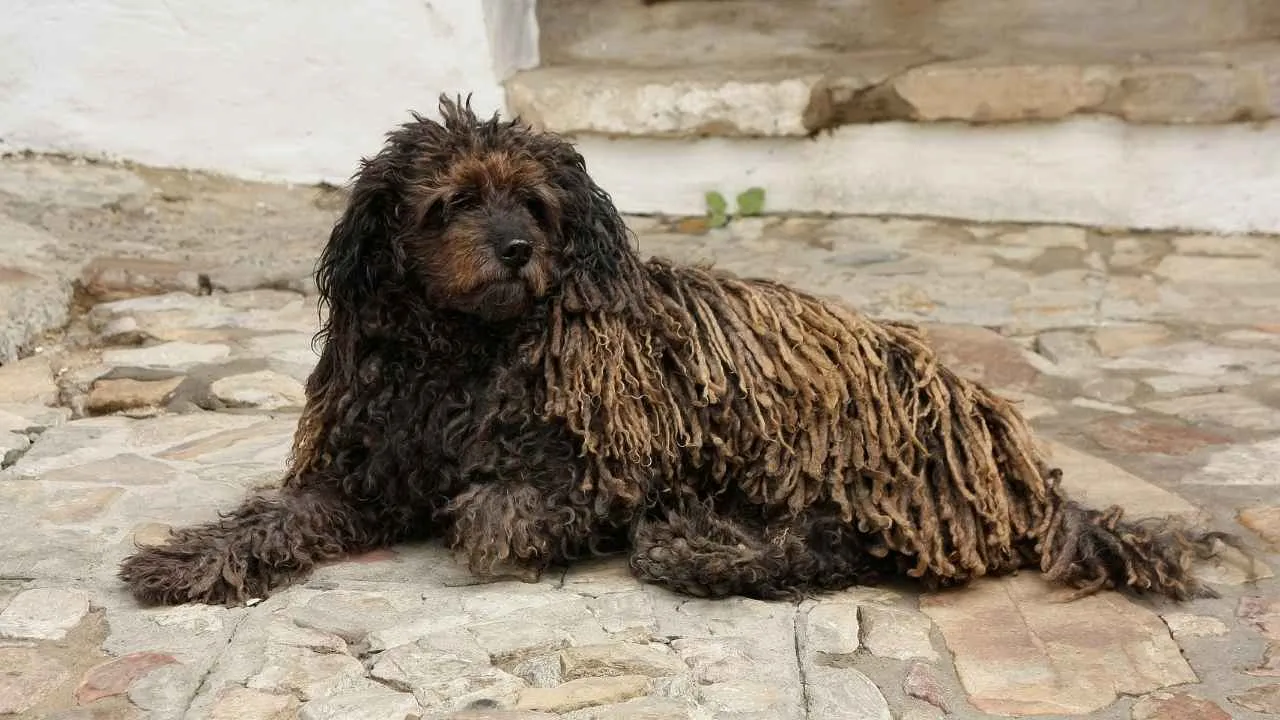
The Komondor, often dubbed the “mop dog” due to its distinctive corded coat, hails from Hungary and has a storied history as a livestock guardian.
Their unique appearance isn’t just for show; those dense cords provide protection against harsh weather and potential predators. Historically, Komondors have been entrusted with safeguarding flocks, a testament to their protective instincts.
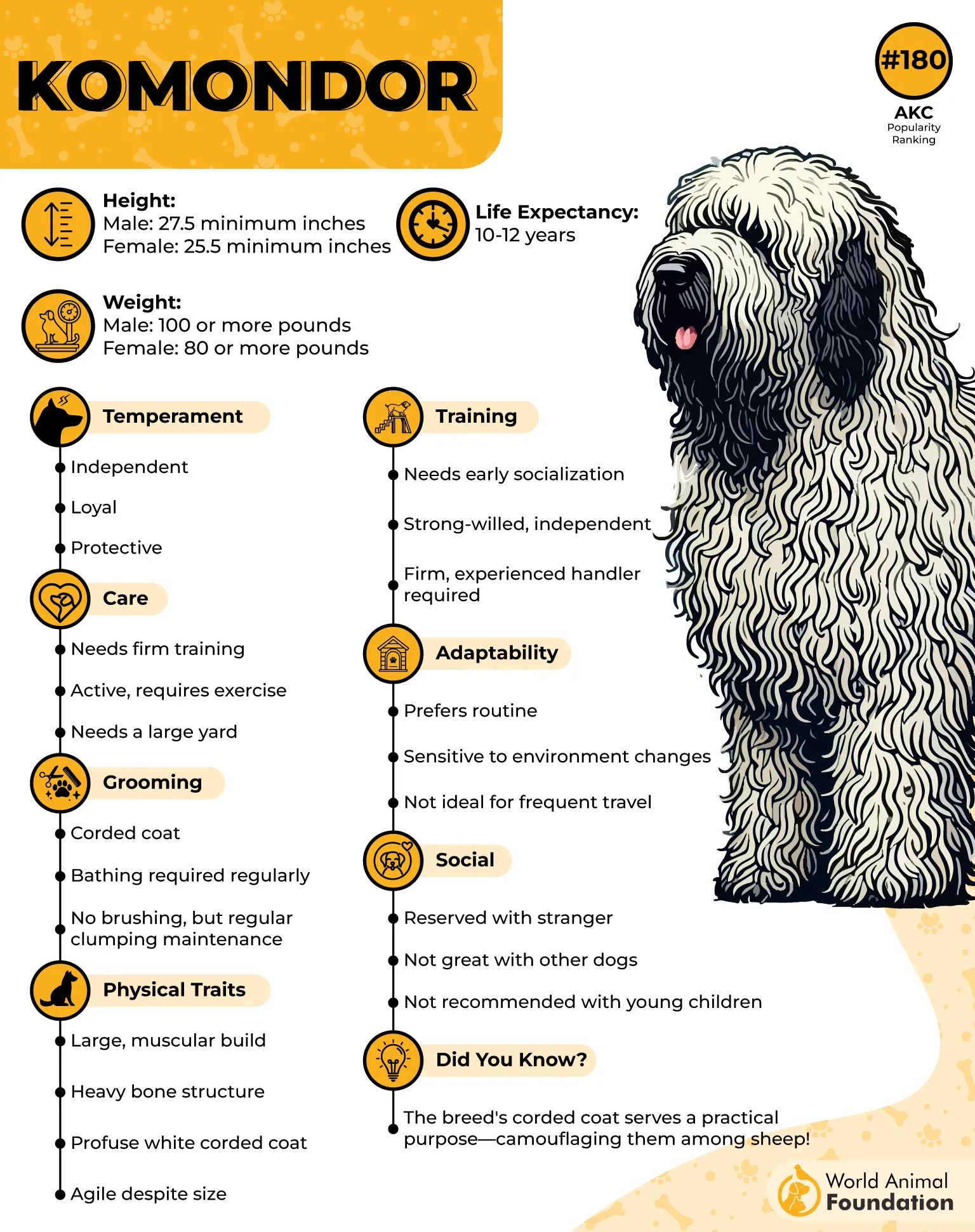
When introduced to chickens from a young age, they can become vigilant guardians, ensuring the safety of the flock from potential threats.
Training these livestock guardian dogs requires patience and consistency. Their independent nature, stemming from centuries of autonomous guarding, means they might not always be immediately obedient.
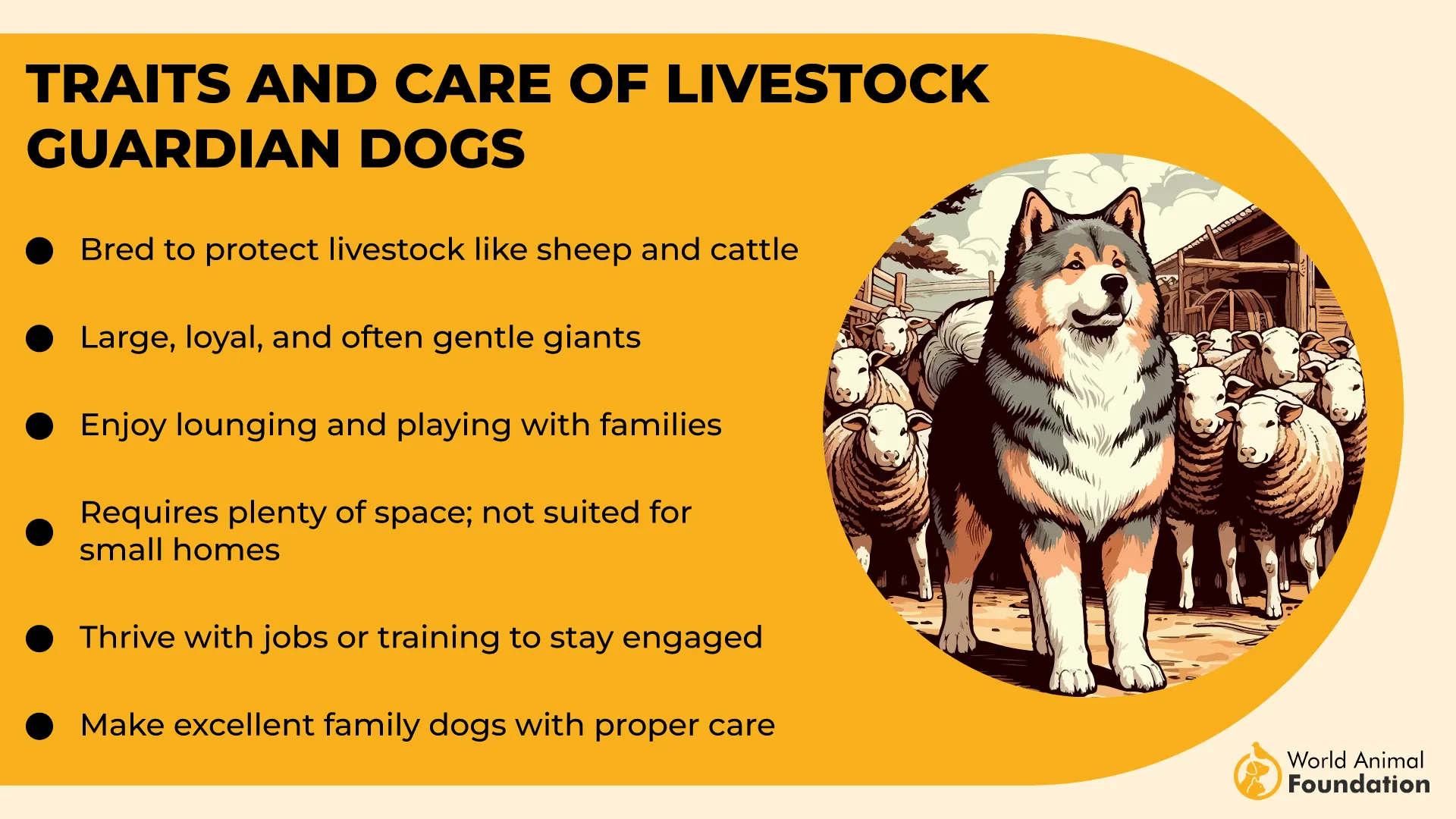
However, with firm and positive reinforcement, they can be taught to coexist peacefully with chickens. WebMD suggests socializing them early is essential, exposing them to various farm animals to nurture their protective yet gentle demeanor.
Potential owners should be prepared for regular grooming sessions to maintain their coats and prevent matting. Additionally, ensuring ample space to roam and fulfill their guarding instincts will lead to a happier and more balanced Komondor.
2. Maremma Sheepdog
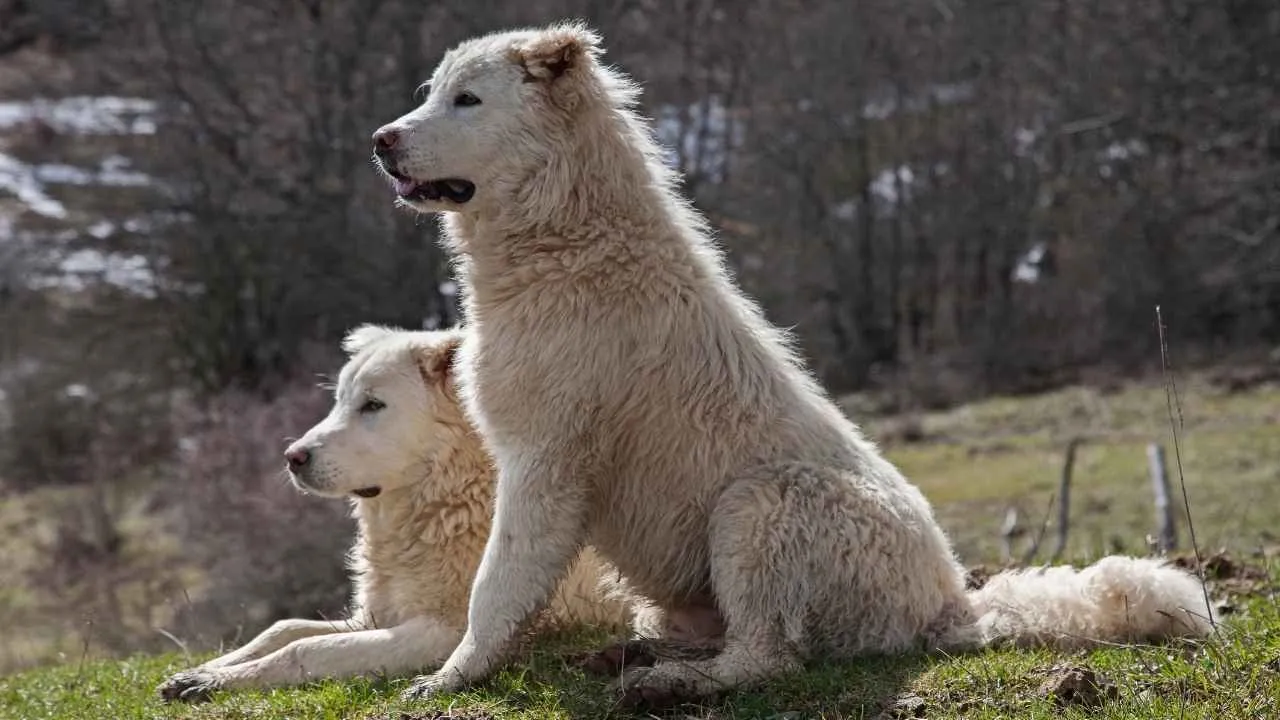
Bred specifically in Italy, the Maremma Sheepdog has been a steadfast protector of livestock for centuries. Their primary role has been to guard sheep against predators like wolves, showcasing their bravery and dedication.
This protective instinct seamlessly transfers to poultry, making them excellent guardians for chickens. Their thick, white double coat adds to their majestic appearance and protects against the elements.
These dog breeds are known for their independent thinking, as per Purina, a trait developed from making decisions while guarding flocks without direct human supervision. This independence means that while they are protective, they require consistent training to ensure they understand boundaries and commands.
Early socialization is crucial, introducing them to chickens and other farm animals to foster a harmonious environment. Once properly trained, they turn into one of the best dog breeds.
These dogs thrive in environments where they have a job to do. Without adequate mental and physical stimulation, they can become bored. Ensuring they have space to patrol and duties to perform will keep a Maremma content and well-adjusted.
3. Shetland Sheepdog
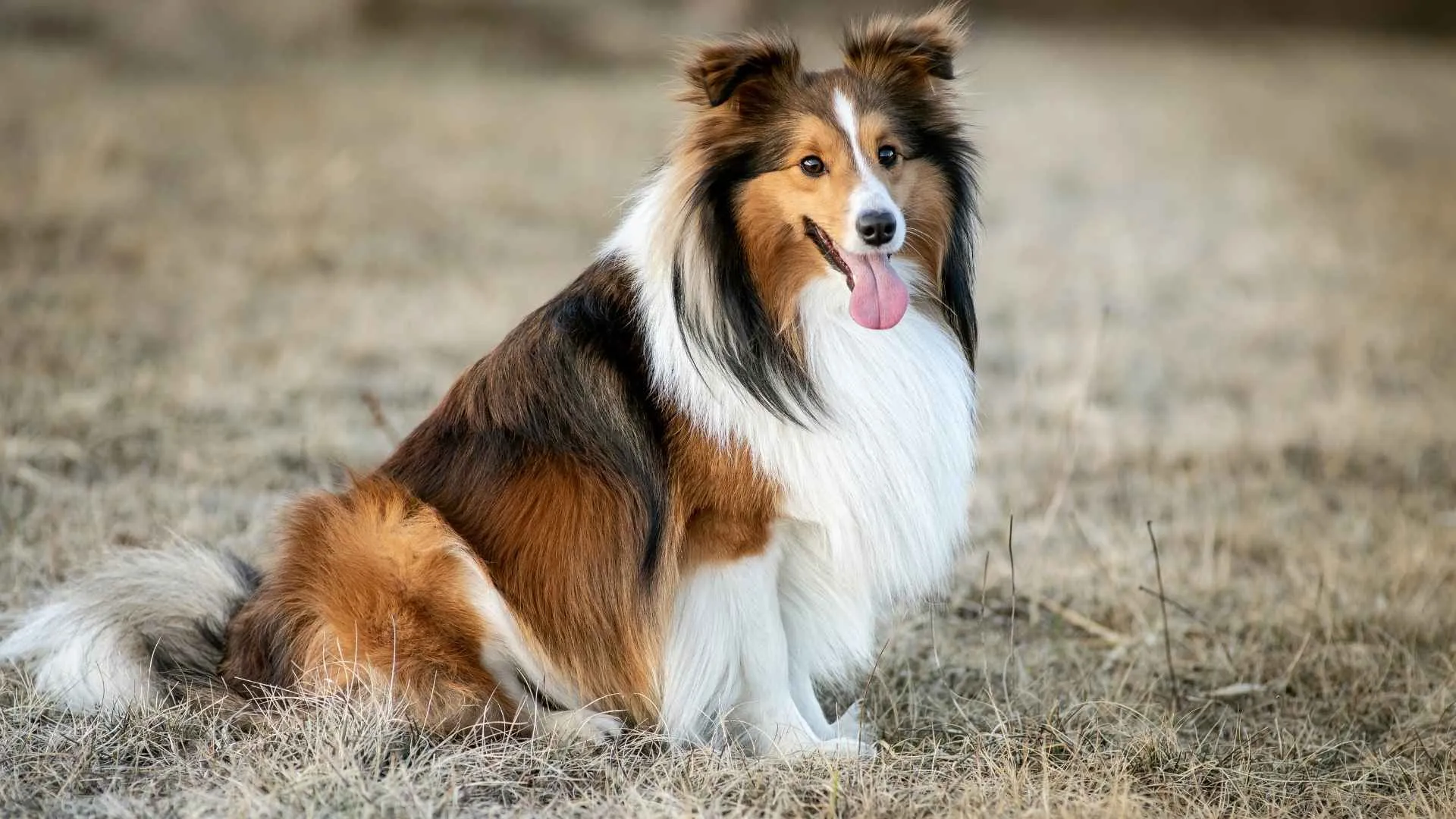
Affectionately known as “Shelties,” Shetland Sheepdogs are intelligent and agile herding dogs from Scotland’s Shetland Islands.
Their herding background means they are naturally inclined to manage and protect smaller animals, including chickens. Their keen intelligence and eagerness to please make them highly trainable, allowing them to adapt to various roles on a farm.

These guard dogs are known for their gentle and affectionate nature. When introduced to chickens gradually and under supervision, they can become excellent companions, ensuring the flock stays within designated areas and alerting owners to potential dangers.
Their smaller size than other herding breeds makes them less intimidating to poultry, reducing the risk of accidental harm.
Regular mental stimulation is essential for Shelties. Engaging them in tasks like herding exercises or agility training can keep them mentally sharp and prevent boredom. Their double coat requires regular grooming to prevent matting and reduce shedding.
4. Anatolian Shepherd
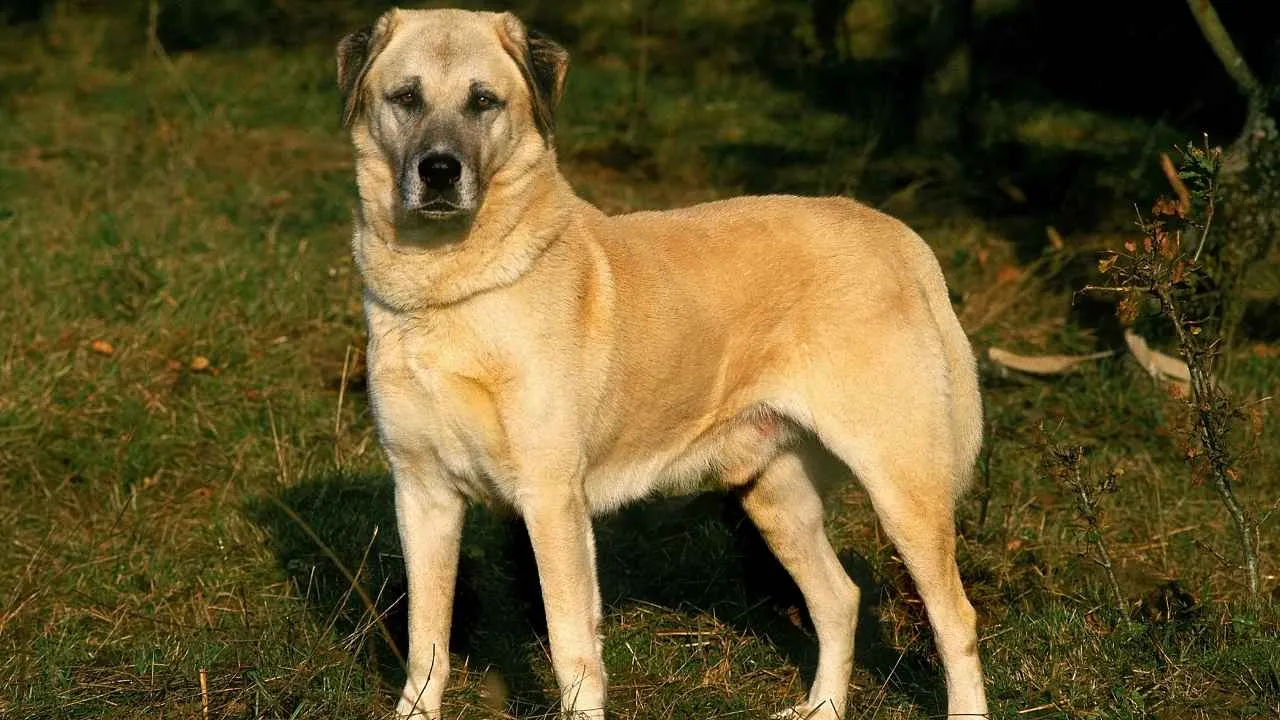
The Anatolian Shepherd is a robust and resilient breed originating from Turkey, where they have been guarding chickens for over 6,000 years. Their primary role has been to protect flocks from predators, showcasing their unwavering dedication and bravery.
This innate protective instinct makes them suitable guardians for chickens, especially when raised alongside them.
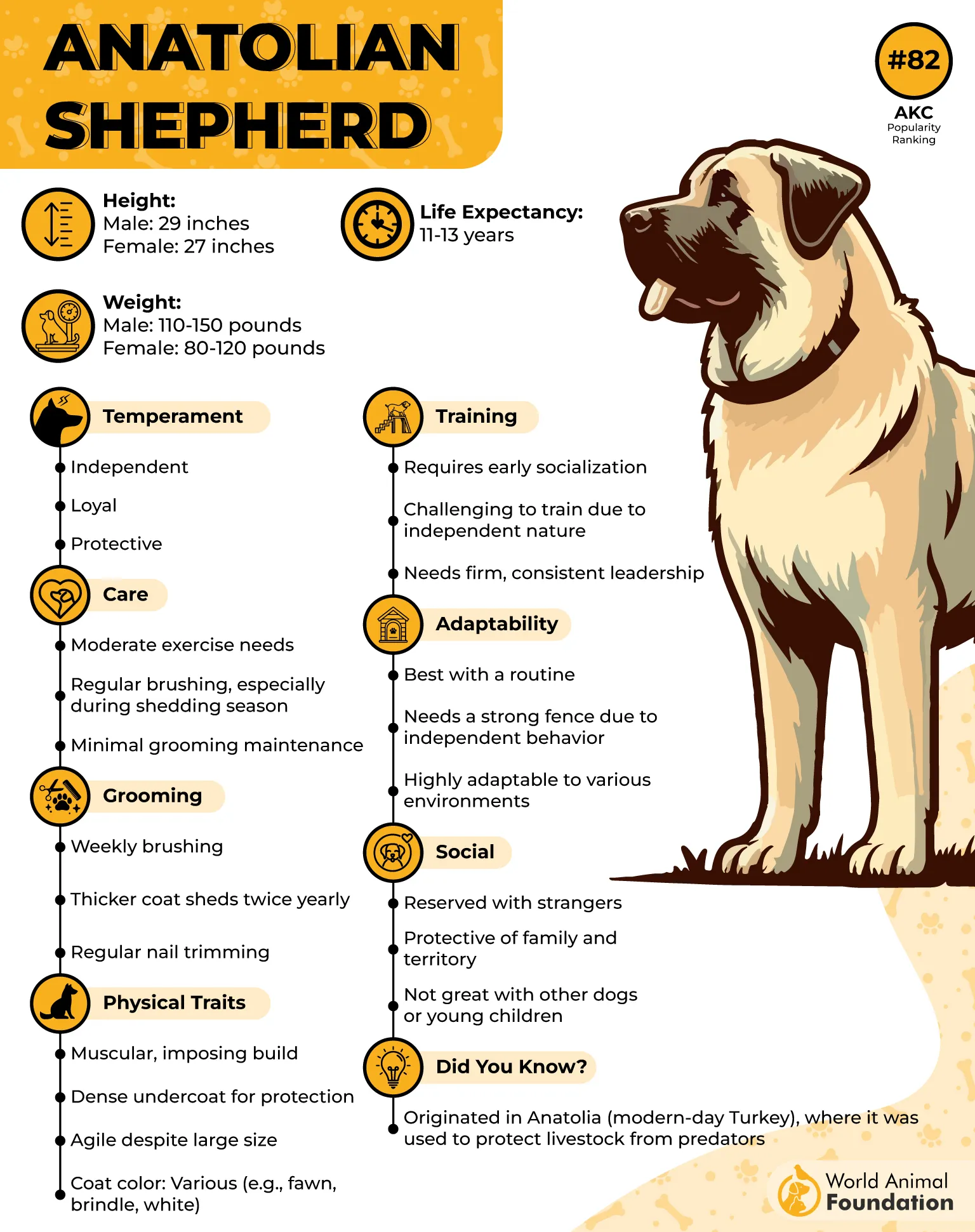
Anatolians are known for their independence and strong-willed nature. They are accustomed to making decisions without human intervention, a trait that has been honed over centuries of guarding livestock. While this independence is beneficial in a guarding context, it necessitates consistent and firm training to ensure they understand their role and boundaries.
These dogs require ample space to roam and patrol. Confining them to small areas can lead to frustration and behavioral issues. Their short double coat is relatively low-maintenance but does shed seasonally. Regular brushing during these periods can help manage shedding and keep their coat healthy.
5. Great Pyrenees

The Great Pyrenees, with its majestic appearance and calm demeanor, has been a trusted livestock guardian in the Pyrenees Mountains of France and Spain for centuries. Their role has been to protect sheep from predators, a task they perform with unwavering dedication.
This protective instinct extends to chickens, making them excellent guardians for poultry flocks.
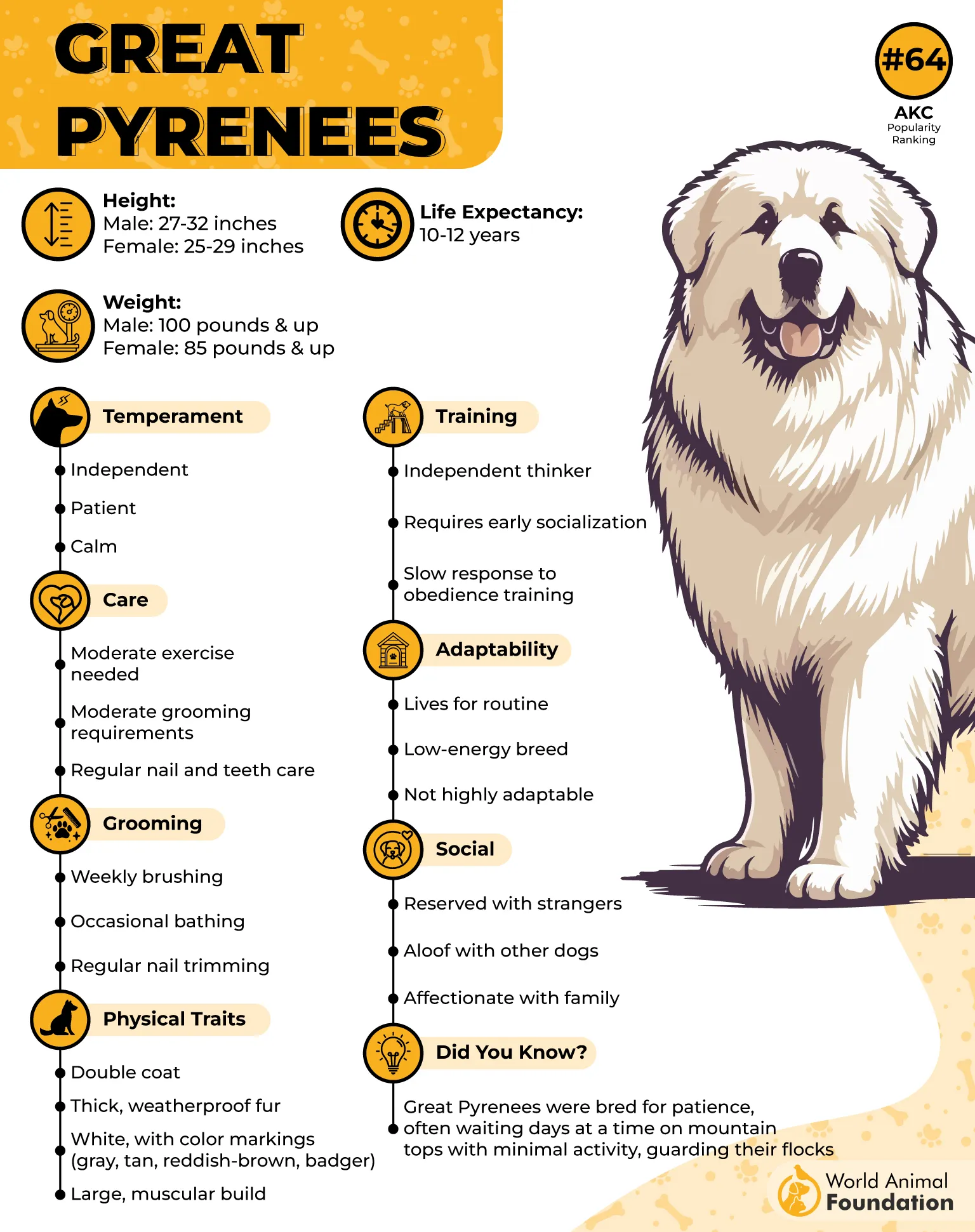
Known for their gentle and patient nature, Great Pyrenees are especially tolerant of smaller animals. When introduced to chickens from a young age, they form strong bonds and take their guardian role seriously.
Orvis claims their imposing size and deep bark are often enough to deter potential predators, ensuring the safety of the flock.
Training a Great Pyrenees requires patience and understanding. Their independent nature means they might not always respond immediately to commands, but with consistent and positive reinforcement, they can be taught to coexist harmoniously with chickens. Regular grooming is essential to maintain their thick double coat, especially during shedding seasons.
6. Spanish Mastiff
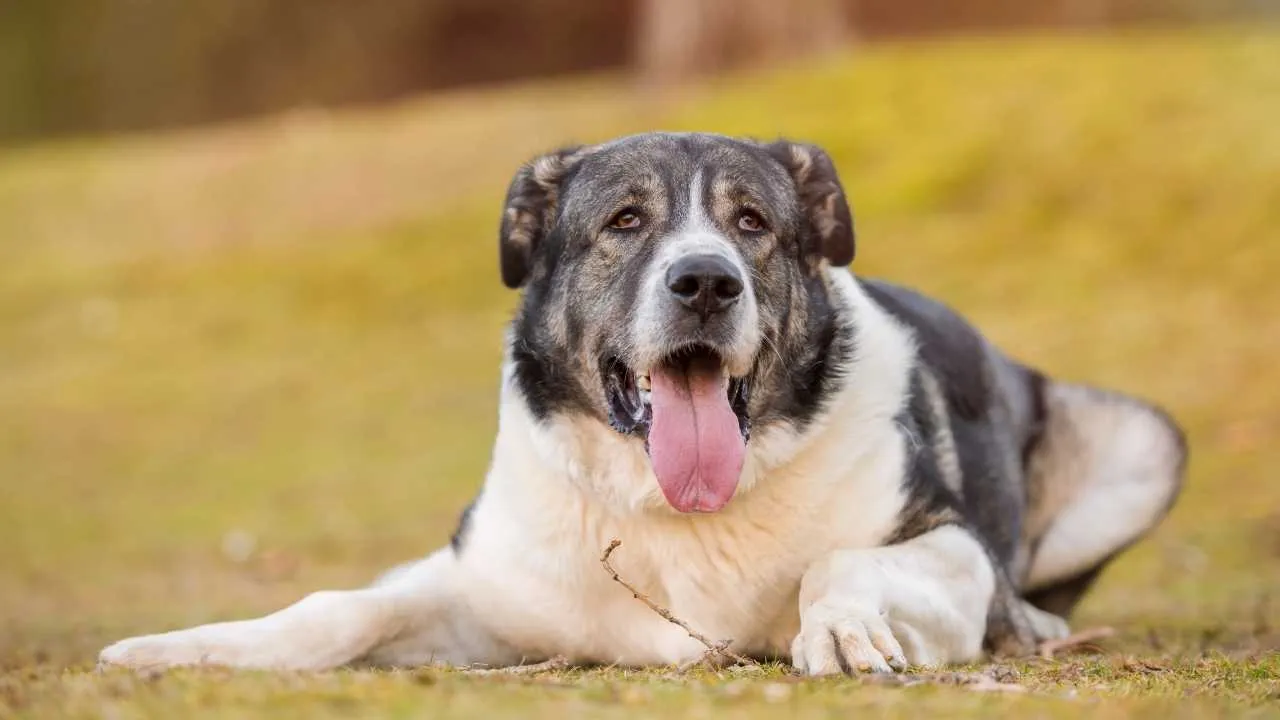
When introduced to chickens early, the Spanish Mastiff typically develops a watchful, tolerant attitude toward them.
These dogs are not overly energetic or excitable, which reduces the chances of them chasing or startling your flock. Instead, they take on a more guardian-like role—quietly patrolling the area and using their sheer presence to keep threats at bay.
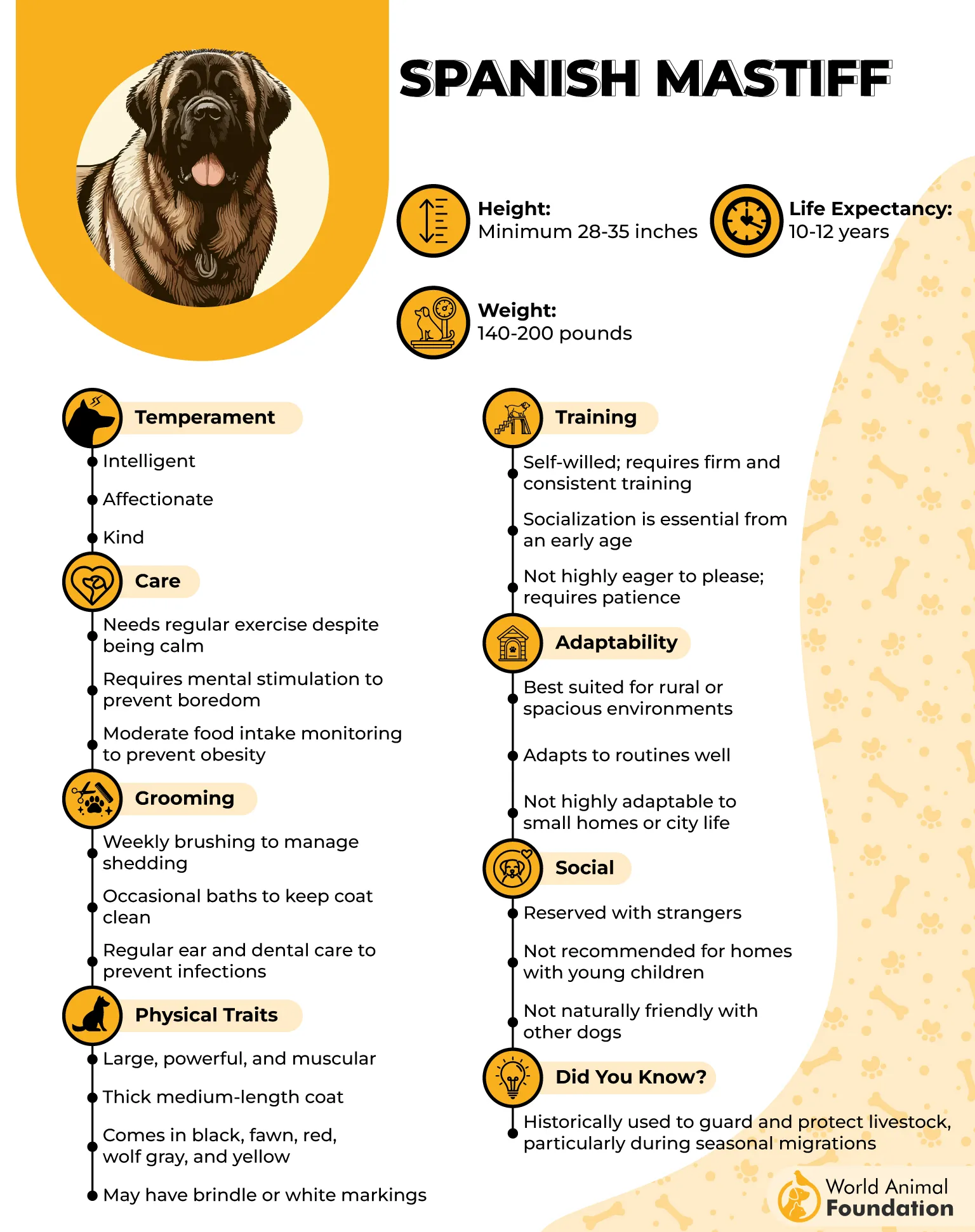
Socialization and early training are important, especially since their large size means they need to understand their boundaries around smaller animals.
Luckily, Spanish Mastiffs are quite intelligent and respond well to consistent, gentle instruction. They may be a bit slow to mature, but their loyalty and calm demeanor make them ideal livestock guardians once fully grown.
In terms of care, their thick double coat requires regular brushing, especially during shedding seasons. They also need plenty of space, as they are unsuitable for cramped quarters.
For those with larger properties, the Spanish Mastiff offers both beauty and brawn—a gentle giant with a deep devotion to their flock.
7. Old English Sheepdog

With its iconic shaggy coat and big heart, the Old English Sheepdog is more than just a walking teddy bear.
Originally bred for herding cattle and sheep in the English countryside, this breed brings a combination of intelligence, loyalty, and work ethic that makes them capable companions for chickens when properly trained.
While not a guardian breed in the traditional sense, Old English Sheepdogs can be incredibly gentle with smaller animals, including chickens. Their herding instincts give them a natural drive to guide and protect, and they often view farm animals as part of their flock.
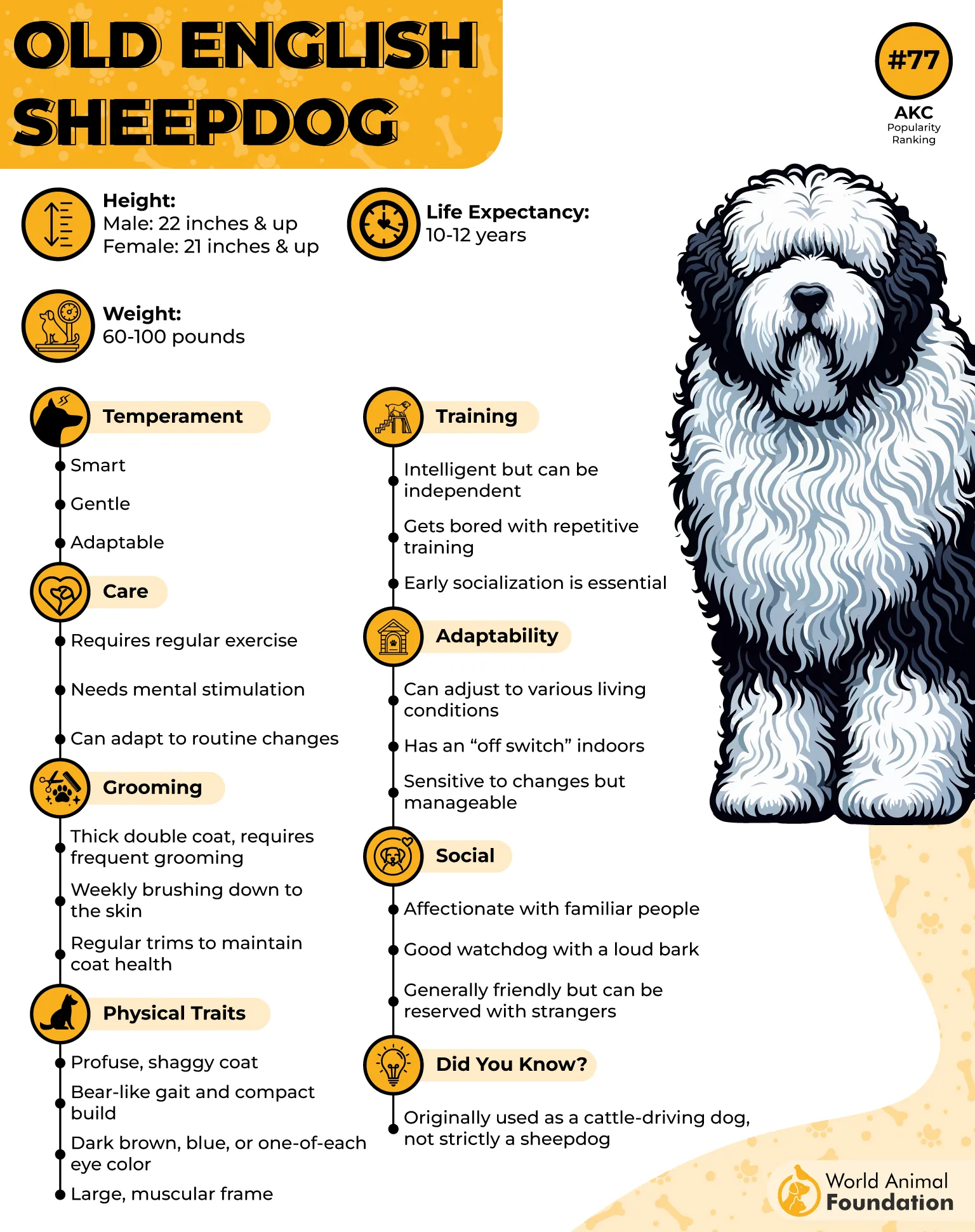
When raised around chickens, they typically learn quickly what behavior is appropriate.
Training is key with this breed, as their playful energy can sometimes lead to unintentional chasing or herding. With consistent reinforcement, they become respectful and careful around birds. Their coat requires considerable grooming—expect regular brushing sessions to keep mats and tangles at bay.
But with proper care, they’re charming, reliable, and affectionate dogs that add character to any farm.
8. Kuvasz
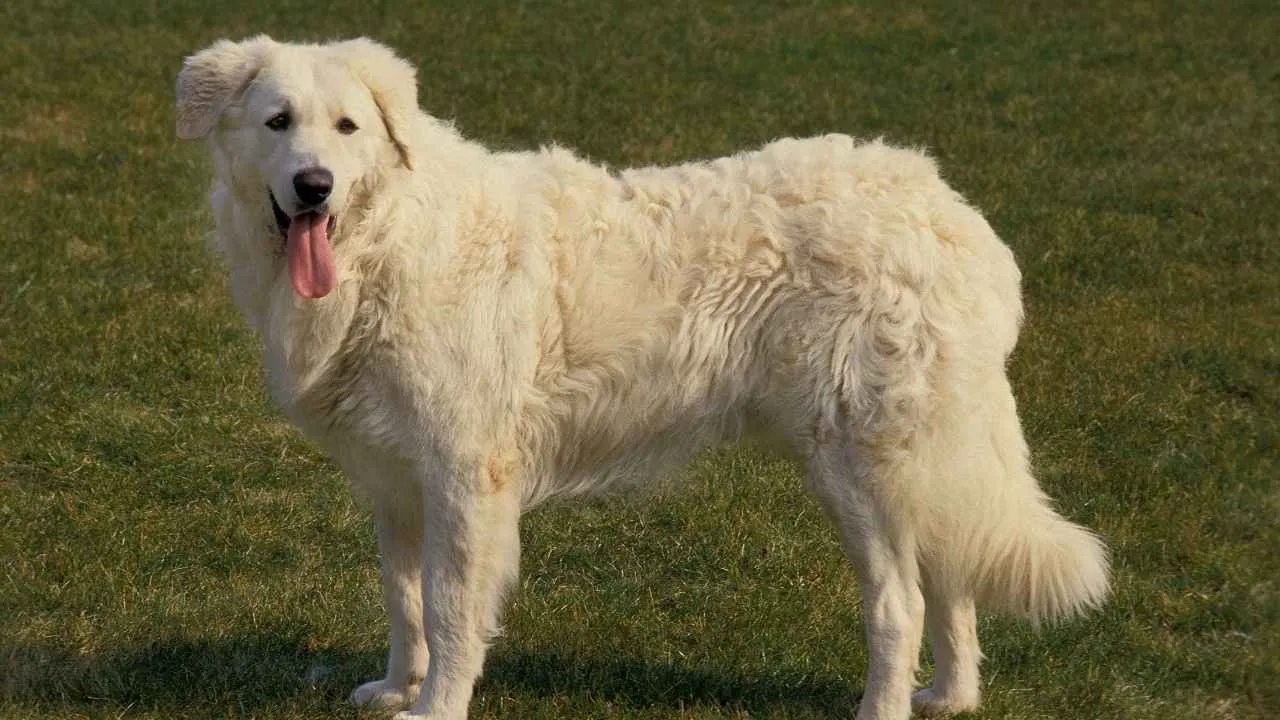
The Kuvasz (pronounced KOO-vahss) is a majestic Hungarian guardian breed historically used to protect livestock from wolves and other predators.
Their thick, white coats and commanding presence may look regal, but these dogs are hardy, independent, and serious about protecting their flock—which includes chickens.
Known for their loyalty and courage, the AKC recognized Kuvasz are deeply bonded to the animals in their care. When socialized early, they accept chickens as part of their responsibility and can become excellent poultry protectors. Their natural suspicion of unfamiliar animals and people helps keep predators at bay.
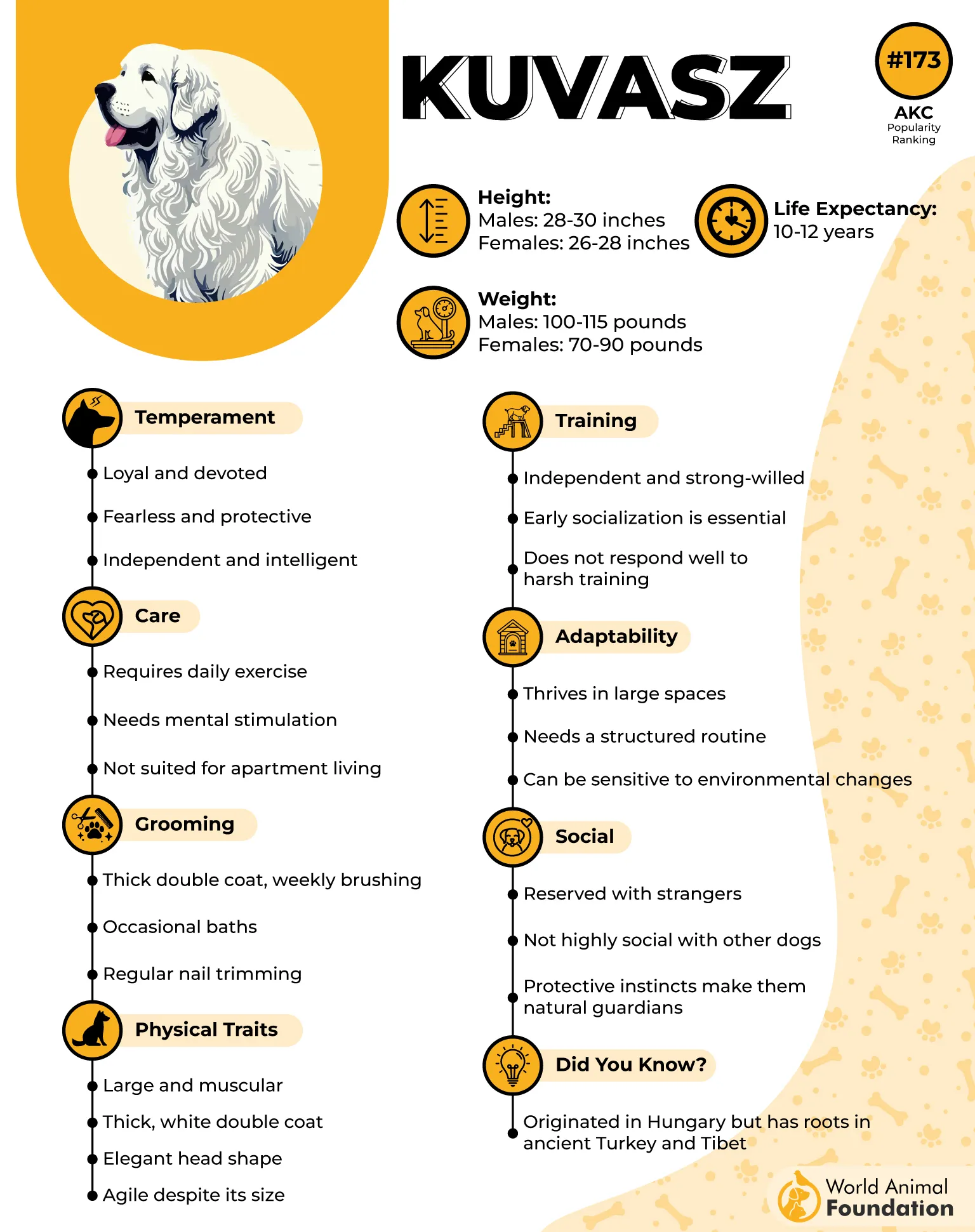
That said, the Kuvasz is not a beginner’s dog. They are independent thinkers who require early and consistent training. They’re not overly affectionate, but their loyalty runs deep, especially when they know their job.
Regular grooming is needed to maintain their thick, weather-resistant coat, and they need plenty of space and a clear purpose to be happy. For experienced owners, the Kuvasz offers intelligence, beauty, and unshakable guardianship.
9. Pyrenean Mastiff
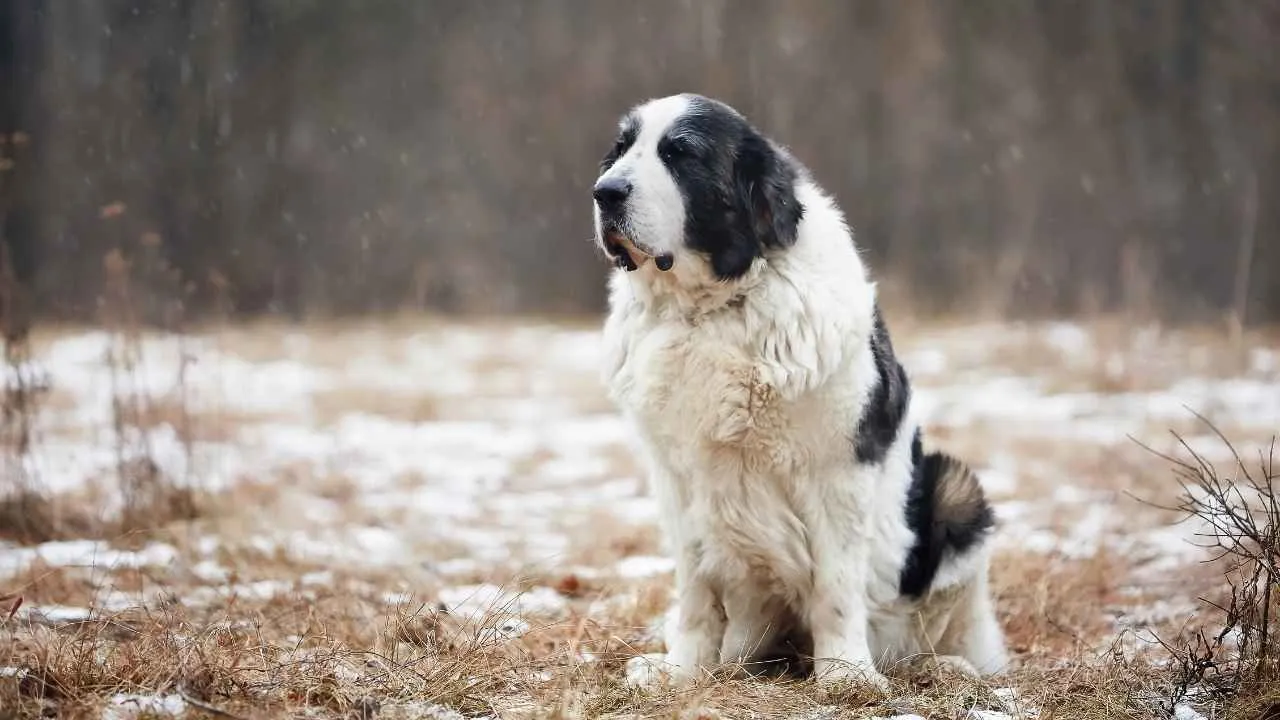
The Pyrenean Mastiff is another giant breed that combines the gentleness of a devoted guardian with the strength of a seasoned protector.
Originating in the Spanish Pyrenees, this breed was traditionally used to guard livestock from wolves and bears during seasonal migrations. With their calm demeanor and natural protective instincts, they’re a great choice for chicken coops and larger farms.
What sets the Pyrenean Mastiff apart is their patience and low prey drive. PetMD says they’re not easily excitable, making them less likely to view chickens as toys or prey. Their calm nature and observant personality allow them to keep watch without stressing the animals they protect.
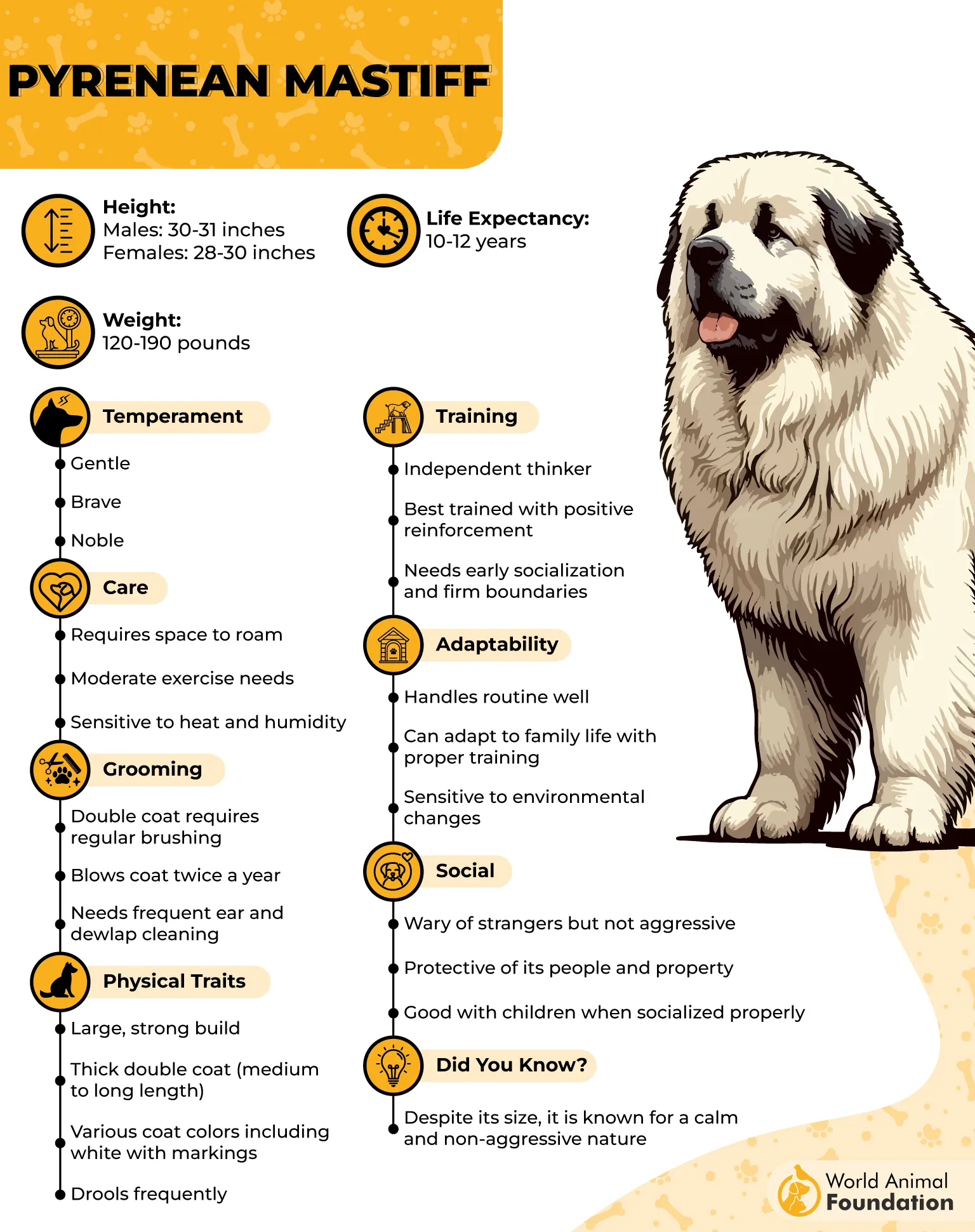
These gentle giants require space, both physically and emotionally. They thrive when they have a job to do and don’t respond well to being confined for long periods. Their long, thick coat requires regular brushing, especially during seasonal sheds, and their large frame needs a nutrient-rich diet and proper exercise to stay healthy.
With the right training and environment, the Pyrenean Mastiff becomes a majestic, steady protector for chickens and beyond.
10. Welsh Corgi
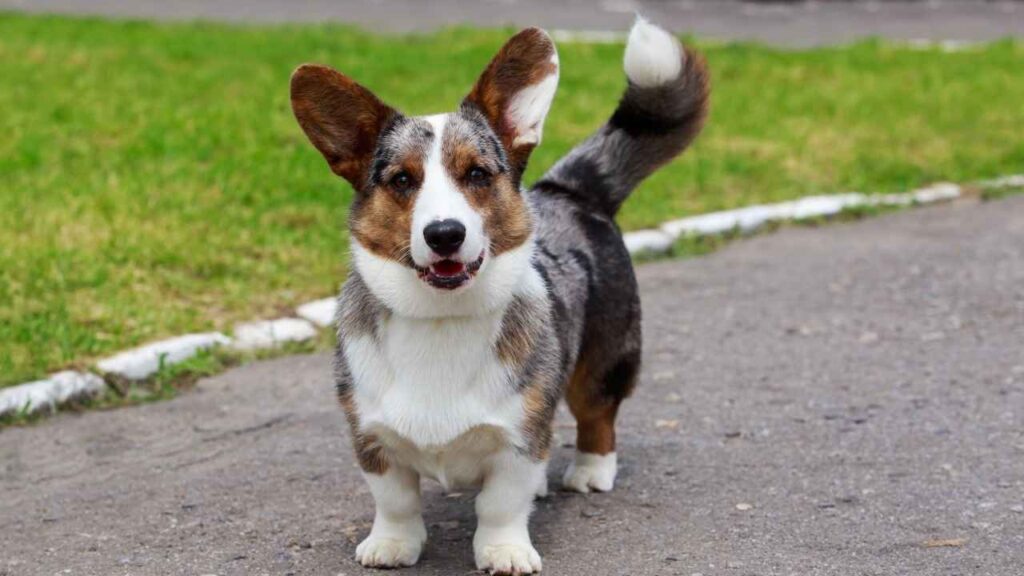
Don’t let their short legs fool you—the Welsh Corgi is a capable little farm dog with big brains and an even bigger heart.
Whether you’re talking about the Pembroke or Cardigan variety, both types of Corgis have herding backgrounds and surprising versatility. With the proper guidance, they can coexist peacefully with farm animals and protect chickens.
Corgis were bred to herd cattle by nipping at their heels and darting under hooves, so they are naturally alert, agile, and energetic. When introduced to chickens properly and early, they often learn to treat them gently. Their small size can be an asset—it makes them less intimidating to poultry while still being effective at gently herding or guarding.
Their intelligence makes them quick learners, and they thrive on positive reinforcement. However, their herding instincts can sometimes result in chasing or barking, so training is important to establish boundaries.
Corgis also need regular mental and physical activity to prevent boredom. While not a traditional guardian dog, the Welsh Corgi can be a delightful and surprisingly effective chicken companion.
Conclusion
Bringing dogs and chickens together on the same property might seem like a balancing act, but with the right breeds and proper training, it’s more than achievable—it’s harmonious. From gentle giants like the Pyrenean Mastiff to the agile Sheltie and clever Corgi, these breeds prove that coexistence between canines and chickens is not only possible but incredibly rewarding. They keep your chickens safe!
The key to success lies in early socialization, consistent training, and understanding each breed’s instincts. While some breeds have been guarding livestock for centuries, others bring unique energy and charm that, when channeled appropriately, make them perfect poultry pals. Border collies and Kangal dogs are also some great guard dogs.
Whether you’re running a backyard coop or a full-scale homestead, choosing a dog that respects and protects your chickens can bring peace of mind and a true sense of partnership. These guardian breeds aren’t just companions—they’re coworkers and flock defenders with wagging tails and watchful eyes.
If you’ve been dreaming of a farmyard where dogs and chickens live side-by-side, it’s absolutely within reach. Just add patience, praise, and a little training—and the feathers and fur will fall right into place.


